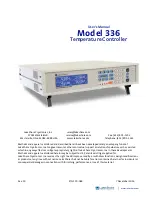
Low pressure regulator Type FL 90-4, Type FL 91-4
8 / 12
part no. 05 004 52 b
Connecting and installing hoses assemblies
Connect hoses so that mechanical, thermal and chemical stresses are avoided:
mechanical stress: e.g. do not pull the hose assembly over sharp edges
thermal effect: e.g. avoid open flames, radiant heat
chemical effect: e.g. avoid grease, oil, caustic substances
Install hose assemblies so that they are not under tension (no bending and tensile strains or
torsion).
Install hose assemblies so that their connections cannot loosen unintentionally.
Connections to the pressure regulator with 90° outlet prevent the hose assembly from being
kinked.
Observe the applicable national installation regulations for LPG systems.
LEAK TESTING
Risk of burning or fire.
Serious burns to the skin or damage to property.
Do not use an open flame to check for leaks.
Leak testing before start-up, check the product connections for leaks.
1. Close all shut-off fittings on the gas appliance.
2. Slowly open the gas vapour or the gas cylinder valve(s).
3. Spray all connections with a foam producing substance according to EN 14291
(e.g. leak spray, item no. 02 601 00).
4. Bubbles will form in the foam producing substance if there are any leaks.
If more bubbles form, re-tighten the connections (see ASSEMBLY). If
you cannot stop the leaks, you must not use the product.
Observe the applicable national installation regulations for LPG systems.
START-UP
After the product has been ASSEMBLED and LEAK TESTING has been carried out
successfully, it is immediately ready for operation.
1. All shut-off fittings on the connected devices must be closed.
2. Slowly open the withdrawal valve or the gas cylinder valve.
3. Observe the assembly and operating instructions of the connected devices.
If you open the withdrawal valve or the gas cylinder valve too quickly, this can result in
a short-term pressure increase that triggers the overpressure shut-off device (OPSO).
If the visual indicator switches to
RED
during start up, do the following:
•
Allow a few short bursts of gas to escape from the connected device to equalise the
pressure.
•
If the pressure does not equalise and the OPSO cannot be unlocked
(visual indicator remains
RED
), the pressure regulator must be replaced.
OPERATION
The product can be damaged if the gas cylinder is moved!
Entrained liquid phase can cause the pressure to increase in the LPG system and damage
the product or the LPG system.
Do not move the gas cylinder while the system is in operation.
















































